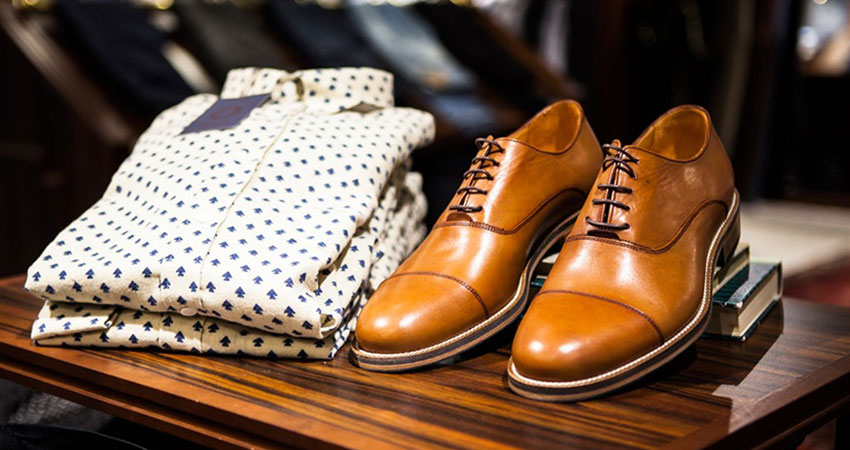In recent years, the drivers of image for luxury brands have been changing fast. Historically, the scarcity model of luxury has driven many brands to destroy surplus merchandise to maintain a certain image. In some cases, a single brand would destroy tens to hundreds of millions worth of unsold, brand-new merchandise.
Those excess goods were destined for the “luxury graveyard” or incinerator—resulting in the occasional exposé over the past several years about the egregious waste of this too-common practice.
But now, the tables are turning. Maintaining an image of sustainability has become the key priority—which means finding a purpose for excess inventory. Expanding your product inventory lifecycle in this way actually brings several core benefits:
- Minimizing your carbon footprint
- Giving your brand exposure to a new audience
- Earning additional revenue
- Providing consumers with access to products they love
With the global climate on track to rise by 2.7 degrees by 2040, slashing or burning inventory is no longer an acceptable practice, asserts the Fashion Law Journal. Expanding the lifecycle of a product minimizes waste while building a brand’s reputation in the age of rapidly rising concerns about sustainability. Plus, it allows consumers to feel good about their choices by lowering their carbon footprint—something they value highly.
Valued By Consumers
Consumers’ willingness to pay more for a sustainable product is fast rising. Almost 90% of Gen X say they’ll pay more for a sustainable product—an extra 10% or more—up from just 34% two years ago. That can translate into purchasing more durable products that will last for many years, such as luxury items, rather than cheap alternatives.
Those who purchase full-price luxury items are paying attention to brands’ stance on sustainability and product lifecycle, too. For 62% of luxury customers, a brand’s sustainability practices are a key concern that may influence whether they purchase its products. For Millennials and Gen Z, that number climbs to 64%. And 56% of consumers investigate brands’ social responsibility practices before purchasing.
The designer jewelry brand Bavna keeps a commitment to sustainability front of mind. “Our designs are created to be timeless odes to Mother Earth and her infinite gifts of stones that find their way into our collections,” said Sunny Jane, designer and CEO of Bavna. “We are all bound to this earth, and whatever we can do to ensure our creations never go to waste is an important consideration for our company.”
“When you operate from a place of being the best, you never have to worry about your legacy,” said Ori Zemer, principal and owner of fine jewelry brand ALOR. “Your legacy becomes the right decisions, the right actions you took to make the world the best place for everyone.”
The Legal Imperative Grows
And it’s not just about doing what’s right. Increasingly, this stance on sustainability is becoming law.
Some countries like France are passing legislation prohibiting the destruction of inventory. We’re likely to see more such regulations, so it only makes sense to place yourself ahead of the curve by adopting sustainable practices now.
For these reasons, combined with the financial benefits to both companies and consumers, an emerging market is focused on extending the product lifecycle. And it’s doing this without competing with brands, instead tapping into a new audience.
Maximizing a product inventory lifecycle doesn’t compete with current offerings. Rather, it appeals to the next generation of shoppers—people who are unlikely to purchase full-priced current-season items. By extending your inventory’s lifecycle, you’re gaining an extra percentage of revenue and building brand exposure. This doesn’t take away from your brand’s core audience—it cultivates a new one. Think about the secondary audiences that might be drawn to your product and how you can reach them by placing your unsold inventory in collections they might look at.
After all, the luxury goods market is growing, not shrinking. Globally, it reached $316 billion in 2019, and by 2027, it’s predicted to grow to $353 billion. The secondary market for products from luxury brands will continue to grow alongside it rather than compete with it. In 2019, the secondary market reached $28 billion, and experts predict it will reach $64 billion by 2024.
But purchasing secondhand goods isn’t the only option for consumers who want luxury at a more comfortable price point. Rather, buying unsold merchandise from past seasons can give them access to top-of-the-line products that are still brand new and verified as 100% authentic.
Find the Right Brand-Safe Partners
Granted, customers do need to take care to purchase products from reputable sellers that offer safeguards on product quality. Some sellers collect discount prior-year products from various luxury brands but don’t necessarily guarantee quality or verify authenticity. Savvy consumers will understand that they must seek out these guarantees from retailers that carefully curate their products to make sure they’re getting the real deal.
When offering your excess inventory at a discount, work with a reputable retailer that offers a rock-solid guarantee of quality. This will also ensure that your products don’t get mixed in with knock-offs that found their way into an unscrupulous or unknowledgeable retailer’s offerings. You’ll maintain your brand image by featuring your offerings in a collection of authentic designer products while avoiding having to advertise a discount yourself.
Also look for a partner that appeals to the up-and-coming demographic rather than your main target market. Then, as new customers fall in love with your brand, they’ll begin to seek out your newest pieces at authorized retailers as their available income increases.
At the same time, if asked about your sustainability practices, you can proudly point to your waste reduction efforts as you extend the product lifecycle through these channels. Your strategic choices will benefit consumers and the planet—and they’ll take notice!
Larry Birnbaum is the CEO of ShopWorn

